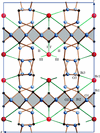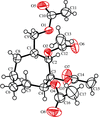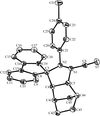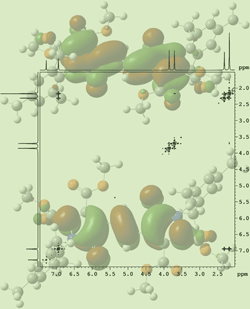issue contents
December 2007 issue
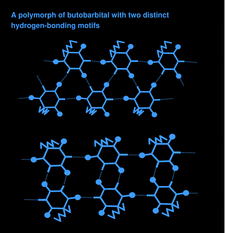
Cover illustration: The one-dimensional hydrogen-bonding motifs in 5-butyl-5-ethylbarbituric acid, viz. tape and ladder. See Gelbrich, Zencirci & Griesser [Acta Cryst. (2007), C63, o751-o753].
inorganic compounds
Download citation


Download citation


The crystal structure and synthesis of Bi5O7Br are described. The structure is compared with that of closely related (but non-isotypic) α-Bi5O7I.
Download citation


Download citation


The title compound contains zigzag-like chains of corner-sharing [Y2O10] dimers and BO3 triangles, which complete a three-dimensional framework. The Rb+ ions are located in the channels.
Download citation


Download citation


Rietveld refinements from very high resolution neutron powder diffraction data on the relaxor ferroelectric [Pb(Zn0.3066Nb0.6133Ti0.08)O3] (PZN-8%PT) show that it is monoclinic in the space group Cm at 4 K. Atomic coordinates show strong electric polarization at this temperature.
Download citation


Download citation


The title compound, diiron(II) phosphate hydroxide, Fe2(PO4)(OH), has been synthesized hydrothermally and is the synthetic analogue of the mineral wolfeite. The crystal structure contains edge- and corner-sharing FeO4(OH) and FeO4(OH)2 polyhedra, linked via corner-sharing to the PO4 tetrahedra.
Download citation


Download citation


Iranite is isomorphous with hemihedrite, ZnPb10(CrO4)6(SiO4)2F2. The SiO4 and CrO4 tetrahedra and CuO4(OH)2 octahedra form layers parallel to (120) that are held together by Pb2+ cations.
metal-organic compounds
Download citation


Download citation


Download citation


Download citation


Download citation


Download citation


Download citation


Download citation


Download citation


Download citation


Download citation


Download citation


Download citation


Download citation


Download citation


Download citation


Download citation


Download citation


Download citation


Download citation


Download citation


Download citation


Download citation


Download citation


Download citation


Download citation


Download citation


Download citation


Download citation


Download citation


Download citation


Download citation


Download citation


Download citation


Download citation


Download citation


Download citation


Download citation


Download citation


Download citation


Download citation


Download citation


Download citation


Download citation


Download citation


Download citation


Download citation


Download citation


organic compounds
Download citation


Download citation


Download citation


Download citation


Download citation


Download citation


Download citation


Download citation


Download citation


Download citation


Download citation


Download citation


Download citation


Download citation


Download citation


Download citation


Download citation


Download citation


Download citation


Download citation


Download citation


Download citation


Download citation


Download citation


Download citation


Download citation


Download citation


Download citation


Download citation


Download citation


Download citation


Download citation


Download citation


Download citation


Download citation


Download citation


Download citation


Download citation


Download citation


Download citation


Download citation


Download citation


Download citation


Download citation




 journal menu
journal menu











